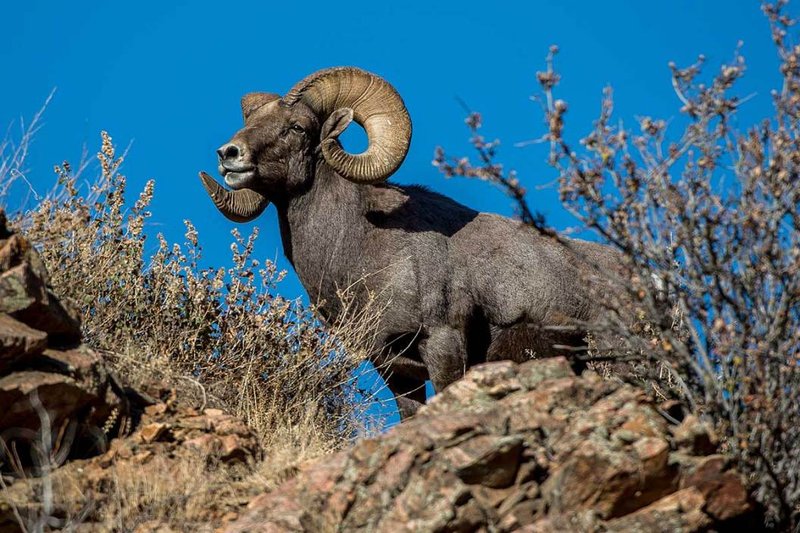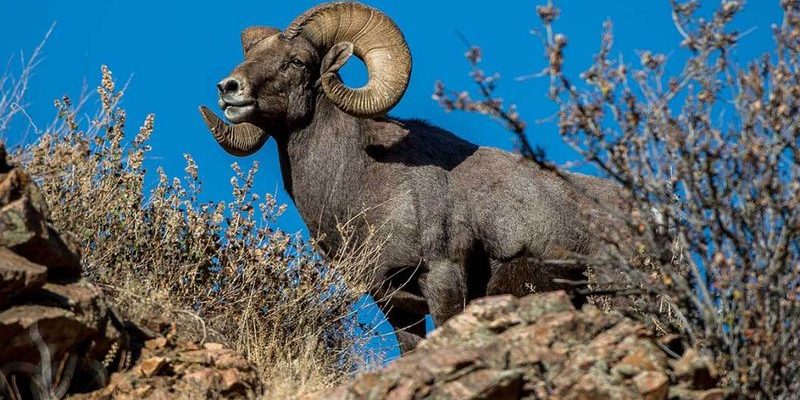
Bighorn sheep are fascinating creatures that thrive in the wild, primarily found in North America. They have developed specific hunting strategies and diets that help them endure the harsh climates of their home ranges. So, whether you’re a wildlife enthusiast or just curious about these magnificent animals, understanding their feeding habits and survival tactics can give you a greater appreciation for them.
Understanding the Bighorn Sheep’s Diet
The bighorn sheep’s diet is largely herbivorous, focusing on a variety of plants. Think of them as picky eaters—well, sort of! They prefer to munch on grasses, sedges, and forbs, which are flowering plants. These snacks pack a punch when it comes to nutrition.
During spring and summer, bighorn sheep feast on tender shoots and lush vegetation. As the seasons change and winter approaches, they adapt their diet to survive. During the colder months, they shift to hardier plants, including shrubs and tree bark. This adaptability is crucial; it’s like switching from fresh salad to hearty stew!
Here’s a breakdown of their diet:
- Grasses: A primary food source, especially in warmer months.
- Sedges: These nutrient-rich plants are especially favored.
- Forbs: Flowering plants add variety to their meals.
- Shrubs: Used as a winter fallback when other food is scarce.
How Bighorn Sheep Hunt for Food
You might be wondering, how exactly do bighorn sheep hunt? Well, they don’t exactly hunt like predators do. Rather, they’ve developed efficient methods of foraging. Their keen eyesight and agility allow them to spot food from a distance, which is especially helpful in their mountainous habitats.
As skilled climbers, they can navigate steep rocks and cliffs where other animals might struggle. Picture them gracefully bounding across rocky terrain, using their powerful legs to leap, all in search of a tasty meal. They often graze in groups, which is not only social but also enhances their safety—there’s strength in numbers!
Here’s how their foraging works:
- Visual Scanning: With exceptional eyesight, they can see potential food sources far away.
- Climbing Skills: Their strong legs and hooves allow them to reach high vegetation that other animals can’t.
- Group Grazing: Being in a herd helps them keep watch for predators while they dine.
Seasonal Changes in Their Diet
As seasons shift, so does the bighorn sheep’s menu. In spring and summer, their plates are full of fresh greens. This is when they can feast on the most nutritious offerings. However, as autumn kicks in and winter approaches, things start to change.
During the colder months, food becomes scarce. You can imagine having to make do during a long winter when your favorite foods are out of reach. Bighorn sheep tackle this challenge by munching on tougher, less nutritious forage. They might find themselves nibbling on woody plants or digging through the snow to uncover hidden grasses.
What does this seasonal shift teach us? It shows their remarkable resilience and flexibility. They adapt based on what’s available, ensuring their survival no matter the circumstances.
Predators and Their Role in Bighorn Sheep Survival
As agile foragers, bighorn sheep don’t face many predators in the wild, but they have to stay vigilant. Mountain lions, coyotes, and even some birds of prey can pose a threat. Just like any prey animals, they need a plan for staying safe while they eat.
Bighorn sheep often rely on their incredible speed and agility to escape danger. When they sense a predator, their instinct kicks in. They’ll often dart away, using their knowledge of the terrain to navigate quickly and efficiently.
Here’s how their survival strategies play out when it comes to predators:
- Herd Behavior: Staying in groups allows for better protection and early warning signals.
- Quick Reflexes: Their speed helps them evade threats when necessary.
- Terrain Awareness: They know their rocky homes well, using it to their advantage to escape.
Water Sources and Hydration Needs
While bighorn sheep are famously hardy, they still need water to survive. Much like humans, they can thrive on a variety of hydration sources. They obtain most of their water intake from the plants they eat, especially during the lush seasons. But when food is dry in summer or snow-covered in winter, they must seek out water sources directly.
Bighorn sheep are skilled at finding hidden springs and streams in the mountains, often traversing steep areas to reach them. Picture them carefully navigating a rocky ledge to reach a crystal-clear pool—it’s about survival, after all!
Here’s how they maintain hydration:
- Getting Water From Plants: In spring and summer, their diet provides a good amount of moisture.
- Finding Springs: They instinctively seek out reliable water sources during dry spells.
- Drinking at Dusk: They often hydrate during cooler times to conserve energy.
The Importance of Habitat for Diet and Hunting
The habitat of bighorn sheep plays a significant role in their diet and hunting strategies. They typically thrive in mountainous areas with steep cliffs, rocky outcrops, and open meadows. This environment not only offers safe grazing spots but also plenty of places to escape from predators.
Their choice of habitat affects what they can eat. The types of plants available in the high country are crucial. For instance, in rocky areas, they might find more hardy shrubs compared to valleys where grasses flourish.
Consider these key elements of their habitat:
- Elevation: Bighorn sheep prefer higher elevations where food and safety coexist.
- Vegetation Type: The available plants directly impact their diet, influencing health and survival.
- Predator Presence: Natural landscapes help them avoid potential threats while grazing.
Conservation and Future of Bighorn Sheep
As with many wildlife species, bighorn sheep face challenges in the modern world. Habitat loss, climate change, and increases in predators can threaten their survival. Conservation efforts are vital to ensure these incredible animals continue to thrive.
Efforts are underway to enhance their habitat and create safe corridors for migration. Education and awareness can help minimize human impacts, allowing bighorn sheep to adapt and thrive.
Here’s why conservation matters:
- Maintaining Biodiversity: They are part of a unique ecosystem, and their survival is crucial for its health.
- Education: Awareness helps the public understand their importance and protect their habitats.
- Connecting Communities: Preservation efforts often unite communities in support of wildlife.
In summary, the bighorn sheep’s diet and hunting strategies are quite remarkable. From their herbivorous munching habits to their clever foraging techniques, these animals have adapted beautifully to their rugged surroundings. Understanding how they dine—and how they evade predators—can deepen our respect for these creatures and the environments they inhabit. With ongoing conservation efforts, we can help ensure that future generations will still find wonder in watching bighorn sheep thrive in the wild.

